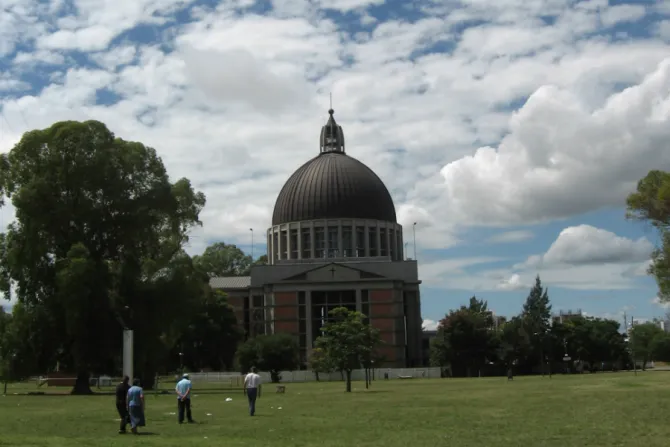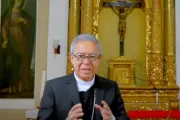San Nicolás is remarkable in that a portion of the messages from the apparition, those between 1983 and 1990, have been declared supernatural and worthy of belief, putting them on par with other apparitions like Fatima and Our Lady of Guadalupe.
This is because Bishop Cardelli "felt that the messages were so important for the faithful in our modern world and perhaps because he understood that such an approval would happen in many years if the messages were waited out in traditional fashion," O'Neill said.
When determining whether an apparition is supernatural in origin, bishops consult the Congregation for the Doctrine of the Faith's 1978 Norms regarding the manner of proceeding in the discernment of presumed apparitions or revelations.
An approved apparition must be free from factual error, with no doctrinal errors attributed to God, Mary, or the saints. Any theological and spiritual doctrines presented must be free of error. The person(s) receiving the messages is/are to be psychologically balanced, honest, moral, sincere, and respectful of church authority. The events cannot be associated with moneymaking or mass hysteria, and must show healthy spiritual fruits.
There is nothing in the messages after 1990 that has been necessarily contentious or contrary to faith and morals, according to O'Neill. Rather, while the almost daily messages have been approved and validated by local bishops, they have not been approved through any formal statement.
Bishop Santiago will continue to receive and examine the messages from Motta, but his decision to keep them private for the time being "seems to bring the events into more clearly defined boundaries for the guidance of the faithful," O'Neill said.
The messages of the San Nicolás apparition have consistently dealt with "common themes of approved apparitions over the years: prayer, conversion, penance and a return to the sacraments," O'Neill said.
At various times, the Virgin Mary apparition referred Motta to several Bible verses. One month after the first appearance, the apparition gave her a white rosary and said, "Receive this Rosary from my hands and keep it forever and ever. You are obedient; I am happy because of it. Rejoice, for God is with you."
Early on in the apparitions, the Virgin Mary asked Motta to find a statue that had been blessed by a Pope and was forgotten in a church. She found the statue Nov. 27, 1983, where Mary had told her to look – in the belfry of the city's cathedral, where it had been left because it had been damaged and not restored.
The statue in question was of the Mother of God holding the Child Jesus. It had been brought from Rome after it was blessed by Leo XIII. The statue resembled the apparitions Motta had received.
Motta has also received at least 68 visits and messages from Christ.
(Story continues below)
Subscribe to our daily newsletter
According to reports, Motta has shared the apparitions' messages from the beginning and has been obedient to church authorities. She now lives a life of great devotion and keeps a low profile. She reportedly received stigmata – the wounds of Christ – on her wrists, feet, side and shoulder.
There have been several documented healings related to the apparitions, including the healing of a boy with a brain tumor.
Motta has shared about 1,800 messages from the Virgin Mary. Many focus on topics such as peace, repentance, returning to the sacraments, and drawing people closer to Christ.
But there are also messages with an apocalyptic theme, predicting great turmoil for humanity ahead.
"So each new message carries tremendous weight as the newest addition to a larger volume of validated messages and events," O'Neill said.
Father René Laurentin, an expert on Marian apparitions, recounted the apparitions' messages in his book An Appeal from Mary in Argentina.




